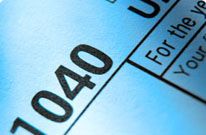Search results
Filing Individual Taxes - IRS
www.irs.govDeadline: April 18
- 1040 Form Instructions
- 1040-EZ Form Instructions
- 1040A Form Instructions
- 1040ES Form & Instr.
- Tax Tables Download
- Schedule A Form Instructions
- Schedule D Form Instructions
Use Schedule D (Form 1040) to report the following: The sale or exchange of a capital asset not reported on another form or schedule. Gains from involuntary conversions (other than from casualty or theft) of capital assets not held for business or profit.
SCHEDULE D (Form 1040) Department of the Treasury Internal Revenue Service Capital Gains and Losses Attach to Form 1040, 1040-SR, or 1040-NR. Use Form 8949 to list your transactions for lines 1b, 2, 3, 8b, 9, and 10. Go to www.irs.gov/ScheduleD for instructions and the latest information. OMB No. 1545-0074. 2023. Attachment Sequence No. 12
These instructions explain how to complete Schedule D (Form 1040). Complete Form 8949 before you complete line 1b, 2, 3, 8b, 9, or 10 of Schedule D. Use Schedule D: To figure the overall gain or loss from transactions reported on Form 8949; To report certain transactions you don't have to report on Form 8949;
Jan 4, 2024 · Schedule D is an IRS form to help taxpayers compute their capital gains or losses and the taxes due. The calculations from Schedule D are combined with individual tax return Form 1040,...
Oct 19, 2023 · Written by a TurboTax Expert • Reviewed by a TurboTax CPA Updated for Tax Year 2023 • October 19, 2023 8:47 AM. OVERVIEW. The Schedule D form is what most people use to report capital gains and losses that result from the sale or trade of certain property during the year. TABLE OF CONTENTS.
Jan 6, 2023 · Updated on January 6, 2023. Reviewed by Eric Estevez. In This Article. View All. Photo: Inside Creative House / Getty Images. The Schedule D of Form 1040 is used to report capital gains and losses when you file your tax return. Learn how to use Schedule D during tax season, and who needs it.
Jan 5, 2024 · Key Takeaways. Schedule D: Capital Gains and Losses is required when a taxpayer reports capital gains or losses from investments or the result of a business venture or partnership. Schedule D is ...

